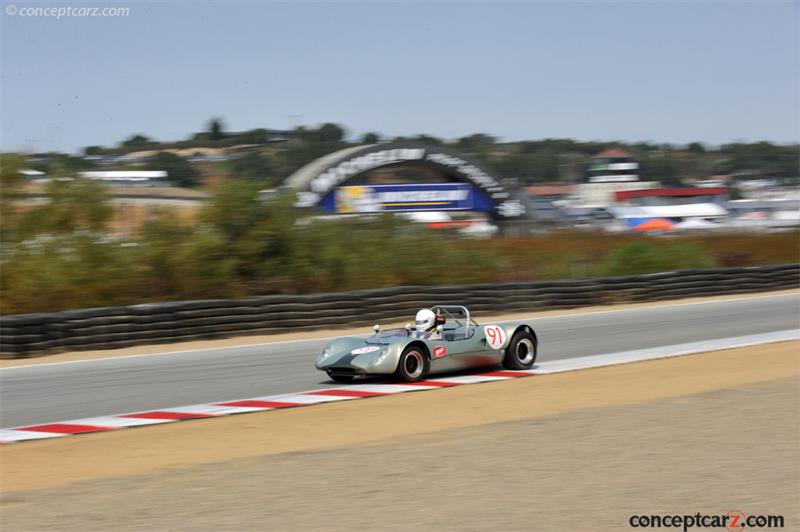The Lotus 23 was a small-bore sports racer with fiberglass coachwork designed by Frank Costin. Designed to compete in a variety of racing classes, the 23 quickly became known as a 'giant killer,' capable of outperforming more powerful competitors. During its production lifespan, around 131 examples were produced in standard 23, 23B and 23C form. 
RoadsterAs one of Lotus' best-selling race cars, the Type 23 had several options including a Coventry Climax 750cc engine, an 1100cc engine, or most popular, the 1600cc Lotus / Ford twin cam. The 23C differs from the 23B with an Mk5 gearbox, wider wheels and tires from the Lotus 25, revised suspension geometry, and fender flares.The Lotus Type 23 holds the distinction of being the last purebred, small-capacity, sports-racing car to be designed from the ground up by Colin Chapman and his team of talented engineers and designers. Introduced in 1962 at the London Racing Car Show, the Lotus 23 was intended for engines of 750cc to 1300cc engines with a Renault 4-speed transaxle. Production versions used a 5-speed Hewland MKIII unit which used the Volkswagen differential gear set and the magnesium alloy transaxle case from Volkswagen in an upside-down configuration, housing bespoke straight-cut gears with dog-rings. At its May 1962 debut at the Nürburgring, Jim Clark opened up a 27-second lead over the Porsche piloted by Dan Gurney, and may have won had he not retired from the race after being overcome by exhaust fumes from a broken exhaust header. A questionable disqualification of the 23 at Le Mans prompted the famous refusal uttered by Chapman to never again enter the event.
Roadster
Chassis #: 23-C-131Two Type 23s had been entered in Le Mans in June of 1962 with one equipped with a 742cc aluminum-block DOHC Coventry Climax FWMC and piloted by Les Leston and Tony Shelly. The other example was driven by Jim Clark and Trevor Taylor and powered by a one-liter pushrod Cosworth Mk. III engine. Both cars failed to pass the scrutineering due to the fuel tank capacity being too large, not enough ground clearance or windscreen height, the turning circle being too large, and lacking a spare tire. All but the lack of a spare tire was resolved, including a makeshift tall windscreen. The Lotus 23 and later 23B used a 4 stud arrangement for the front wheels while the rear had a 6 stud setup. This meant the 23 would need two spare tires for the purpose of changing a flat. To resolve this issue, 4 stud rear hubs were drafted and machined overnight, and flown to Le Mans where they were presented to the scrutineers for approval. To Chapman's dismay, the car was once again rejected. The reason given was that the original 6 stud configuration must have been used by the Lotus Factory as a strength requirement, so the 4 stud configuration must have been unsafe. Even after Lotus engineer Mike Costin produced structural analysis calculations showing the 4 stud rear hub to be safe, it did not change the ruling. Even though the Lotus 23 was not allowed to compete, a Lotus Elite driven by David Hobbs and Frank Gardner won the 1.3 liter GT class and the Index of Performance prize at the 1962 LeMans race. 
Roadster
Chassis #: 23-S-129
View info and historyACO officials would later admit they made the wrong decision and that the Lotus 23 should have been allowed to compete, even offered financial compensation. Chapman suggested a very high figure and when it was rejected, he promised 'We will never race again at Le Mans!'Mechanical SpecificationUnlike the previous Lotus 15 and 17, the Lotus 23 FIA Group 4 racer had a mid-engine configuration. Its Lotus 22-sourced space frame chassis with most of the pipes being round steel tubes in various diameters, with the lower side pipes and the width-wise lower pipe behind the cockpit comprised of rectangle tubes. The upper left round pipe was the water feed pipe for the front-mounted radiator, and the lower right side pipe was used as the return path. The upper right side pipe was the oil feed to the oil cooler, and the lower left tube was the return. Arch Motors ('AM' serial number) handled most of the frame construction. 
Roadster
Chassis #: 23-S-129
View info and historyWider than the 22, it had a 60-inch width for the 23 and 23B, while the 23C was even wider at 65 inches. The wheelbase measured 90 inches and had a length of 139 inches. Much of the suspension was similar to the narrower-frame Lotus 22, with the front using double wishbone arms with outboard coil/damper unit while the rear had radius arms and a top link with a lower reversed wishbone. The steering was a Triumph Herald rack and pinion unit, and the brakes were outboard Girling non-ventilated discs. In compliance with FIA rules, the Lotus 23 had a horn, a windshield wiper, headlights and tail lights, trunk space to the right-rear of the driver, a mounting space for one spare tire under the front body, rear center license plate light, and a wire-operated emergency brake. The open two-seater body was built from fiberglass. The Lotus 23B
Roadster
Chassis #: 23-C-131Into 1963 a Type 23B version was offered with more robust chassis and a standard 1,558cc Lotus-Ford Twin-Cam engine. It was paired with a 'high torque spec' 5-speed Hewland Mk. V transaxle, while smaller displacement engines used a 5-speed Hewland MK. IV unit. Both the Mk.IV and Mk.V transaxles had GKN (Ford Zephyr) differential gears and a forward-facing selector rod on the right side. The gear shifter was now to the right of the driver. The radiator and oil cooler were combined into a single unit, and the intake funnels on the Weber carburetors were within a 'cold air box' that received cooling air from two oval holes cut out on the top side of the rear body behind the driver.The Lotus 23CThe Lotus 23C improved upon its 23B sibling with much wider Formula Two tires wrapped on wider 6-stud, six-spoke magnesium wheels front and rear. To cover the tires, the bodywork was given wing-extensions.
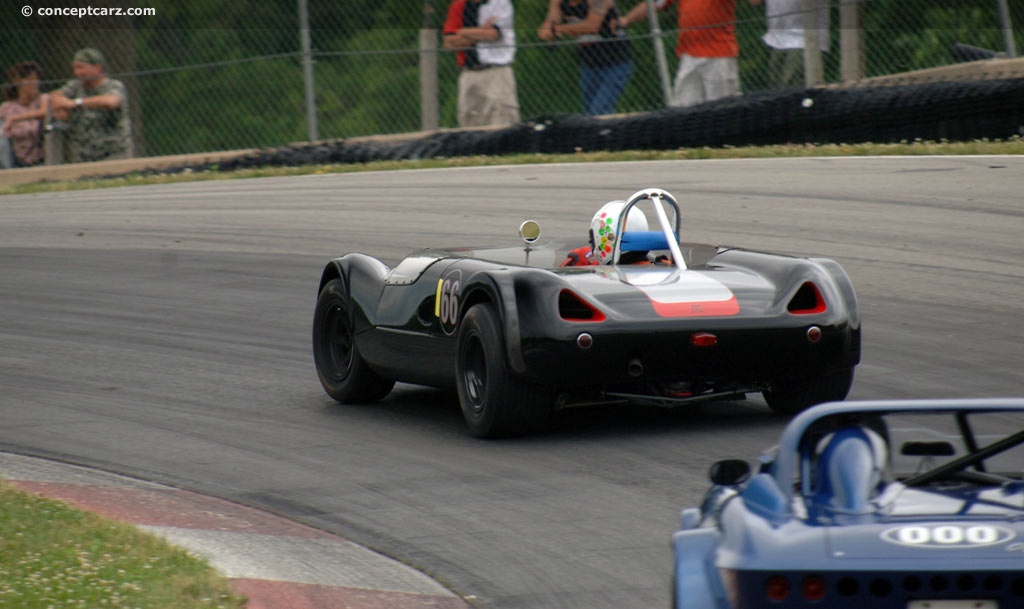
Roadster
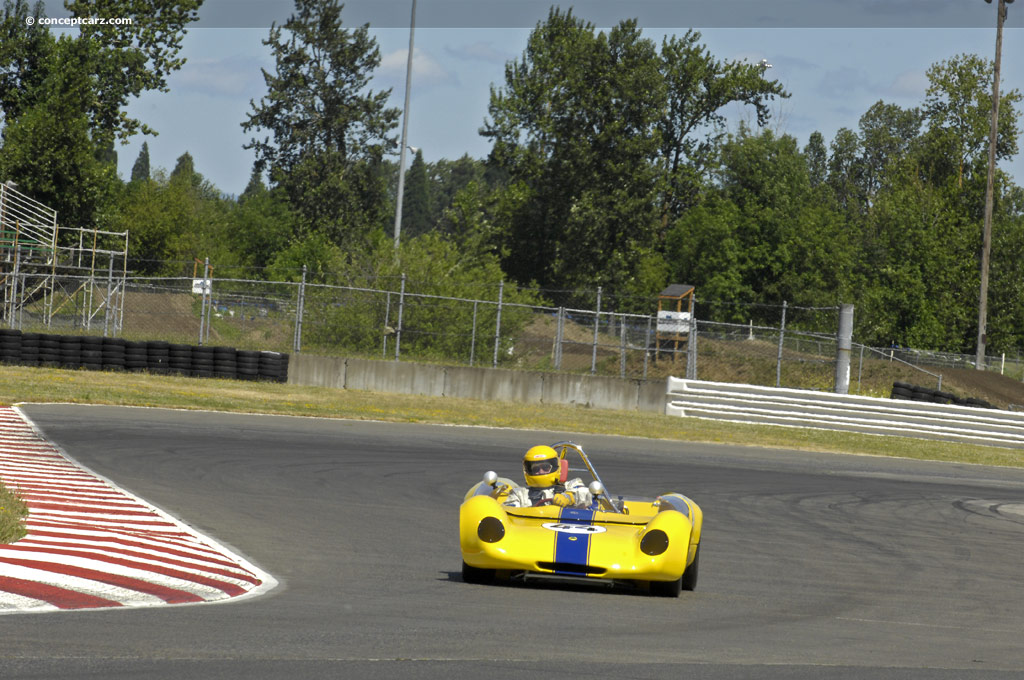
Roadster
Chassis #: 23-C-131
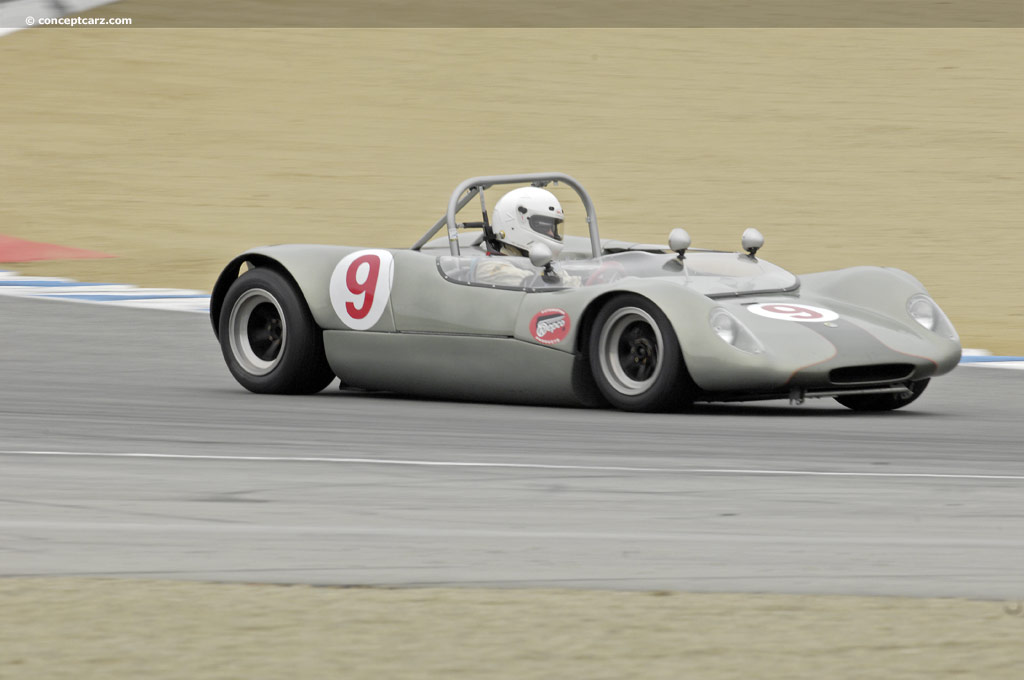
Roadster
Chassis #: 23-S-129
View info and history
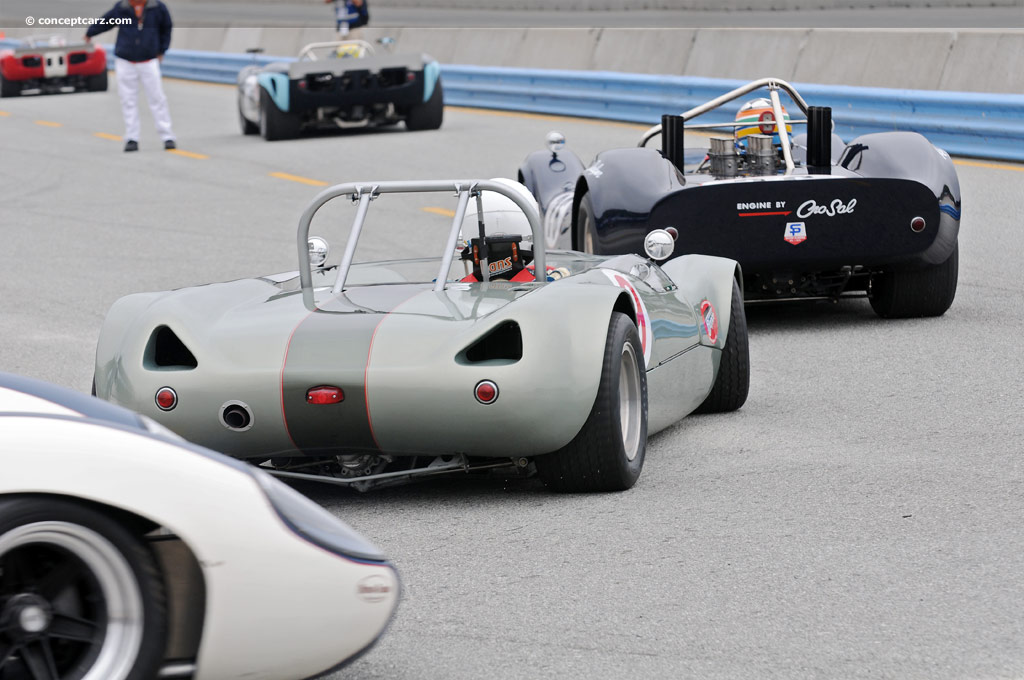
Roadster
Chassis #: 23-S-129
View info and history
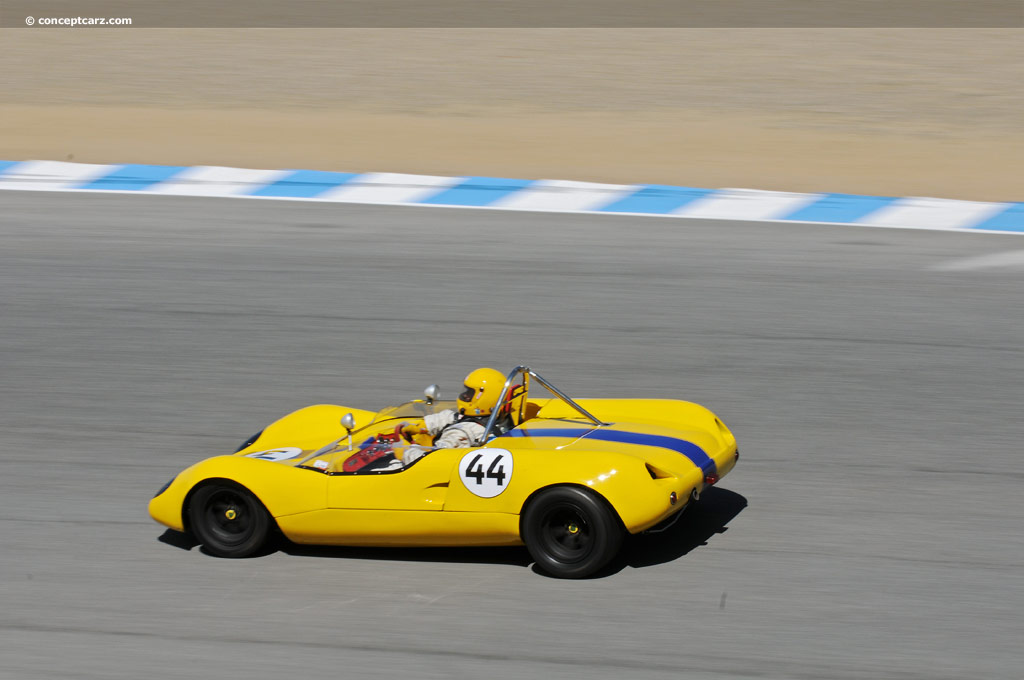
Roadster
Chassis #: 23-C-131
Related Reading : Lotus Type 23 History
In 1962 Lotus introduced their next iteration of the compact, rear-engined sports cars, the Type 23. It was a derivative of the Lotus 19 which had been produced from 1960 through 1961, as well as the Lotus 20, 21, and 22 cars. The Type 23 made its inaugural racing debut at the Nordschleife in May of 1962. The Lotus was fitted with a 100 horsepower engine, but it was enough to propel the car to the....
Continue Reading >>
Continue Reading >>
1966 Lotus 23C Vehicle Profiles
Recent Vehicle Additions
Related Automotive News

CHANNEL 4'S FOR THE LOVE OF CARS RESTORED, FIRST PRODUCTION, EARLS COURT SHOW CAR LOTUS ELITE FOR AUCTION
The 1958 Lotus Elite Series I, one of the most famous Elites in the world, will be auctioned by Silverstone Auctions at the Classic Motor Show Sale on 12th November.
Bought new by close friend of Colin Chapman, the Jazz Legend Chris Barber.
Exten...
Harry Schell: American Bleue
Americans would officially set foot on French soil during the Second World War in 1944. However, after a few years, the troops would leave, yet, there would be one that would remain. He had been in Europe long before and he would be there still when...

High Efficiency Motors: 1958 Formula One Season
C.T. Tommy Atkins would start out his career as a motorcycle racer riding Douglas motorcycles in the early 1930s. By the time the mid-to-late 50s rolled around, Atkins had moved on from racing, but not very far. Perhaps feeling a need to support up-and-coming...

1969 24 Hours of Le Mans: A Traditional Statement Provides a Memorable Race
What if a statement ended up costing one of the biggest victories of ones career Would it be worth it Jacky Ickx would come close to finding out as he approached the checkered flag on the afternoon of the 15th of June in 1969.
Ford had determined...

1967 German Grand Prix: Ickx Just Playing with the Big Boys
As the usual immense crowd gathered around the Nuburgring for the 1967 German Grand Prix, just a casual glance at the grid would not tell the real story. However, it wouldnt take too long before the crowd would begin to take notice of a Formula 2 car...





















